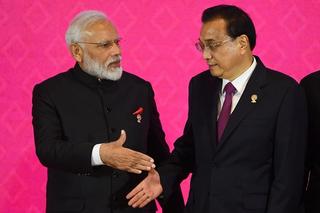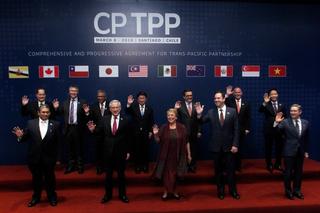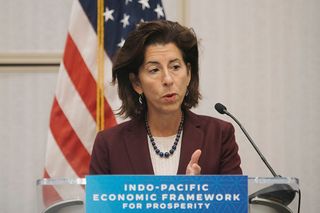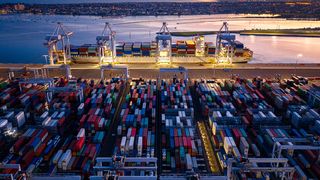Executive summary
The US-proposed Indo-Pacific Economic Framework (IPEF) falls far short of Australia’s preferred gold standard for regional free trade engagement, the Trans-Pacific Partnership (TPP), from which the United States withdrew in 2017. Despite hopes for the United States to return to TPP or a TPP-like agreement under President Biden, it appears the United States is in an era of trade protectionism and industrial policy, at least in the near term, spurred by both domestic politics and strategic competition with China. Accordingly, Australian policymakers have turned their attention to leveraging IPEF as best as possible.
As Australia already has a bilateral free trade agreement (FTA) with the United States, Canberra’s main ambition for IPEF is to ensure an enhanced rules-based economic architecture by further integrating the United States economically and strategically with the Indo-Pacific region. Beyond that, Australia’s main interests are in IPEF’s first and second pillars: trade and supply chains, and it hopes that IPEF can create additional critical minerals supply chains and a region-wide digital trade agreement. At the same time, concerns remain over the long-term commitment to IPEF by the United States and the potential for its stipulation of high labour and environmental standards to alienate developing nations, especially if compelling incentives and on-ramps prove evasive.

America’s eroding economic influence in Asia
Buttressed by US alliances and military pre-eminence across Asia, the Indo-Pacific benefited enormously from US post-war economic policies. After the Second World War, the United States championed free and open trade, export-led development, and structured engagement through the World Trade Organization (WTO).1 This rules-based regional architecture undoubtedly rewarded Australia, driving wealth creation and underpinning the foundation of Australia’s own engagement with Asia, which now accounts for nearly 80 per cent of Australia’s trade in the 2021-22 financial year.2
More recently, however, a ‘America First’ attitude towards international trade has emerged in the United States, first promoted under the Trump administration and largely continued by the Biden administration. In this new era, the United States has been absent from substantive trade negotiations in the region and has embraced industrial policies — most visible in the Inflation Reduction Act (IRA) and CHIPS and Science Act. The IRA and CHIPS Act subsidise US industry and reduce US foreign trade dependencies but also have the impact of disadvantaging foreign competitors in friend and foe-nations alike.
While US economic leadership has receded, China has stepped into the void. As the largest trading partner of most Indo-Pacific countries, China has undoubtedly become the most economically influential nation in the region.3 China accounts for around 30 per cent of Australia’s trade.4 Over the last decade in particular, China has struck numerous FTAs with countries like Japan, South Korea, Australia, New Zealand, ASEAN, and individual Southeast Asian nations.5 Notably, China dominates the largest trade agreement in the world — the 15-member, ASEAN-led Regional Comprehensive Economic Partnership (RCEP), which lowers trade barriers, harmonises trade standards, and establishes common trade rules.6
RCEP’s very existence is a major feat of diplomacy from which member countries including Australia stand to benefit. However, while RCEP undoubtedly increases intra-regional trade, it also has the capacity to incrementally build China’s influence by facilitating further trade and supply chain integration with the region, and diverting economic linkages away from the United States. And China has already repeatedly leveraged its economic ties to influence the region’s regulations, standards, and geopolitical alignment.

While both US Republican and Democratic administrations have shown no inclination to re-join the TPP or its successor, the Comprehensive and Progressive Agreement for Trans-Pacific Partnership (CPTPP), China has expressed an interest in CPTPP membership. Although its accession is unlikely given the considerable domestic reforms China would have to implement, it reflects Beijing’s determination to further deepen regional economic engagement and become a more dominant centre of regional trade and investment.7
This integration is not without risk. Australia’s exposure to punitive trade measures by China, mainly in response to Canberra’s call for an independent inquiry into the origins of COVID-19, has only elevated concerns about Beijing’s growing economic influence.8 A rules-based international trading system free from coercion is central to Australia’s economic wellbeing. Australia therefore sees the development and maintenance of both the WTO system and a US-led counter-balancing economic framework as being in its national interests.
A rules-based international trading system free from coercion is central to Australia’s economic wellbeing.
The US Indo-Pacific strategy must adopt a trade pillar
The United States has a strong latticework of regional military alliances, diplomatic engagement, and development assistance, making an economic prong to its strategy conspicuously absent. As former Office of US Trade Representative senior negotiator Wendy Cutler argues: “While the security leg is unquestionably important, our partners have been clear: without a strong economic pillar, US engagement will be incomplete and will drive our partners closer to China for trade, investment and supply chain connectivity.”9
Numerous US administrations have recognised the need for an economic pillar to round out the US Indo-Pacific strategy. Under President Obama, the United States championed the TPP — a free trade agreement including 12 countries across Asia, North and South America. The TPP was conceived as a means of promoting liberal democratic trade practices and norms over Chinese models. In 2015, President Obama articulated this point, stating his government was negotiating the TPP because “we have to make sure the United States — and not countries like China — is the one writing this century’s rules for the world’s economy.”10
In 2017, President Trump withdrew the United States from the TPP. Although the agreement continues as the CPTPP, the absence of the United States — which would have been the largest member by far — weakens the normative power of the agreement and brings into question US commitment to the region. Without access to the US market, there is far less incentive for the developing members within the CPTPP to adopt higher industry standards. It also seriously curtails the agreement’s trade value and benefits for allies. While some US allies, like Canada, may receive short-term economic benefits, the absence of the United States from a high standard-setting trade agreement is generally viewed unfavourably.
To rectify the United States’ absence in a regional trade agreement, in 2022 President Biden launched negotiations around IPEF involving 14 nations across the Indo-Pacific.11 IPEF countries come from Northeast and South Asia, Southeast Asia, and the Pacific. While it is expected that “an early harvest agreement” — in which a limited but not comprehensive list of provisions are agreed to — will be reached in time for the US-hosted Asia Pacific Economic Cooperation (APEC) Leaders’ Summit in November 2023, few analysts are optimistic that it will provide substantive change to the status quo. Until a substantive IPEF comes into force, US economic leadership in the region will remain limited, with fewer avenues available for the world’s largest economy to influence Indo-Pacific trade and economic practices.
Australia recognises the importance of US economic leadership to balance China’s influence.
Australia recognises the importance of US economic leadership to balance China’s influence. Australia’s Foreign Minister, Penny Wong, clearly articulated this in December 2022:
“We have reached a stage in the evolution of our alliances where they will increasingly require a fully developed economic dimension… The broad take up of the Indo-Pacific Engagement Framework demonstrates the appetite for American economic leadership… A commitment to the region requires greater economic engagement — in itself central to achieving a more favourable equilibrium.”12
In January 2023, former Australian Prime Minister Kevin Rudd put it more succinctly: “For the future, what is the missing elements in US grand strategy? It’s called the economy, stupid,” borrowing a famous phrase used by the Clinton Administration.13 The highest levels of the Australian Government clearly recognise the imperative for an economic element to US Indo-Pacific strategy. This sentiment is shared by the other US allies and partners negotiating IPEF as they appreciate the agreement can deliver far more than economic benefits.

The strategic value of plurilateral economic pacts
The willingness of some IPEF members to negotiate a new trade-related agreement with Washington so soon after being abandoned during TPP negotiations reflects the region’s eagerness for continued US economic influence. When the United States withdrew from the TPP in 2017, Australia, Japan, Malaysia and Vietnam had been negotiating the TPP with Washington for nine years. Many countries, including Australia, lamented the waste of political capital and official resources over close to a decade.14 Yet, they are nonetheless keen to participate in IPEF due to its potential to springboard into a free trade agreement and influence trade practices internationally through their combined global market share.
Multilateral economic agreements can offer strategic benefit by promoting member countries’ chosen rules, norms, and narratives. The CPTPP and RCEP are often characterised as carrying significant strategic weight. Speaking on the CPTPP’s original iteration, Foreign Policy contributors Miller and Angelescu assert:
“[The TPP] is about more than just trade. Its geopolitical component is equally important as countries in the Asia-Pacific are coming to terms with a rising China that seems impervious to respect of the liberal international order.”15
RCEP has been characterised as being able to “redraw the strategic map of the Indo-Pacific.”16 As Wendy Cutler, former negotiator in Office of US Trade Representative (USTR), argued in 2021: “Beijing has been a promoter of RCEP since day one. Then, as the US backed away from the regional stage and pursued a trade policy based on unilateralism and bilateral negotiations, Chinese leaders used that vacuum to portray Beijing as the reliable partner of choice for economic growth, trade, and investment.”17
Although RCEP lacks robust trade rules, making it a relatively weak agreement, its normative power should not be underestimated. By lowering trade barriers and increasing economic alignment with China, RCEP increases Beijing’s economic influence. As the region’s trading architecture shifts increasingly towards China, RCEP is playing a role in shaping the global trade architecture and evolution of the international trading system. Without US participation in substantive trade agreements in the Indo-Pacific, future international trade rules are being written without it. Further, US absence from a regional trade pact means Australia and other countries lose the strategic benefit of US economic engagement.
Two IPEF priorities for Australia
The greatest value Australia perceives from IPEF is to further bind the United States to the Indo-Pacific and provide a counterweight to China’s economic influence. Beyond that core, overarching benefit, IPEF could provide Australia with two key advantages: firstly, an opportunity to “de-risk” through diversifying critical mineral supply chains away from China and secondly, a digital trade agreement that would create common standards, remove red tape, and ultimately increase trade. While all four pillars of IPEF — trade, supply chains, clean energy and decarbonisation, and tax and anti-corruption — are important conversations for Australia to have with IPEF member countries, diversifying supply chains and establishing a multilateral digital trade architecture are Australia’s highest priorities.
Diversifying critical minerals supply chains
Supply chain security seems to have united IPEF members more than other issues, with IPEF negotiations on this topic substantially concluded in May 2023.18 Although specific supply chains were not mentioned by name, all IPEF members agreed in principle to establish three bodies: a supply chains council to develop sector-specific action plans; a crisis response network for emergency communications; and a labour rights advisory board. These would be positive and welcome developments but specific action on critical mineral value chains would be of greatest interest to Australia as a major mining nation attuned to the increased strategic relevance of critical minerals amid great power competition.
Critical minerals are elements deemed essential to the functioning of the modern economy, whether through use in green technology, consumer electronics or communication systems. As each country in the world has varying levels of access to different minerals, there is no universal definition of what constitutes a critical mineral. Australia lists 26 minerals deemed critical, ranging from aluminium to zirconium.19
China dominates the global supply and processing of critical minerals. It is the world’s largest supplier of 16 critical minerals,20 ranging from the cadmium and cobalt needed for batteries to the tungsten needed for electric vehicles. China has a near monopoly across five critical minerals, in which it controls more than 70 per cent of the market.21 Furthermore, among the mineral commodities upon which the United States is 50 per cent or more import-reliant, China is undoubtedly the largest import source.22
Given China’s dominance in this industry, there are fears Beijing could use this leverage and withhold critical minerals trade during a political, economic, or military conflict. China has employed this tactic in the past, having halted exports of rare earths to Japan in 2010 amid a territorial dispute between the two nations.23 Alert to China’s economic coercion, as well as supply shortages during the COVID-19 pandemic, Canberra is actively seeking to diversify its critical mineral supply chains. In June 2023, the Australian Government released its Critical Minerals Strategy 2023–2030 which outlines Australia’s plans to create diverse, resilient and sustainable supply chains through strong and secure international partnerships.24
Among IPEF members, the main producers of critical minerals are Australia, the United States, Malaysia, Indonesia, the Philippines, Japan and, to a lesser extent, India, South Korea, and Singapore.25 Some of these countries are already among the world’s most important critical minerals suppliers. Australia dominates the global production of lithium, essential for battery technology, while Indonesia is the world’s largest nickel producer, maintains the world’s largest nickel reserves and was the world’s top exporter prior to a 2020 export ban.26
While IPEF nations are mighty in their production of critical minerals, critical mineral supply not only relies on the production and export of raw ore, but also on refining capacity. Critical mineral refinement is China’s comparative advantage. IPEF provides an opportunity to promote greater domestic refinement capacity among partner nations and consolidate trusted pathways for both production and processing of critical minerals. If better supported and coordinated, IPEF member states could provide the basis for critical minerals supply chains that reduce reliance on China and promote higher industry standards.
If better supported and coordinated, IPEF member states could provide the basis for critical minerals supply chains that reduce reliance on China and promote higher industry standards.
An IPEF-wide agreement on critical minerals could see the kinds of subsidies and rewards offered by the United States under its IRA expanded to other critical mineral-producing countries. This would not only enhance supply chain resilience but could also advance two other crucial components of IPEF — more robust labour and environmental standards. There are current examples of this dynamic in action in the region. The US-Japan bilateral critical minerals supply chains agreement signed in March 2023 qualifies Japan for IRA subsidies for electric vehicles, helps establish more resilient supply chains, and encourages increased labour and environmental standards in Japan’s critical minerals industries.27 Other IPEF states such as Indonesia have already expressed interest in securing a similar bilateral arrangement.
As the fourth largest producer of rare earths globally, Australia is likely to benefit from the IRA’s unprecedented subsidies for electric vehicle manufacturing and wind energy production. While Australia is concerned (along with other US allies particularly those without free trade agreements like Europe) about the IRA drawing capital away from its shores and this is undoubtedly occurring,28 some of these concerns are being partly addressed through the Australia-US Climate, Critical Minerals and Clean Energy Transformation Compact.29 Signed on 20 May 2023, the agreement commits the two countries to expanding and diversifying clean energy and critical minerals supply chains. This includes enhancing investment flows between the countries and aligning projects connected to the IRA and Canberra’s Powering Australia plan.30
Establishment of a broader, more resilient critical minerals supply chain among IPEF members is essential for Australia to de-risk its reliance on Chinese-dominated critical mineral supply chains.31 Supply chain diversification amongst IPEF members also stands to strengthen Australia’s domestic refinement capacity, attract private investment, and secure its industry advantages.
Increasing high-standard trade through a digital agreement
Although IPEF’s trade pillar does not offer traditional market access, it covers a broad range of complex trade-adjacent issues: labour, environment, agriculture, transparency and regulatory practices, competition policy, and the digital economy.32 The most consequential of these is likely to be an agreement on rules for the digital economy. A digital trade agreement could harmonise standards on a wide range of digital issues, from e-invoicing and e-payments to digital privacy and artificial intelligence. It also offers the prospect of reduced barriers to digital trade, data transfer across borders, data protection, and enhanced cyber security. Importantly, a digital agreement could increase trust and confidence among the business and the financial sectors, leading to expanded trade.
After decades of decentralised, industry-led digital trade development, agreeing on a set of rules around digital standards is particularly important. The Chinese government’s influence in setting digital standards has grown considerably and in ways that emphasise state control over the free flow of information and data.33 Given the risks, Australia, the United States, Japan, and other IPEF members have become increasingly cognisant of the need to set digital standards to mitigate the illiberal uses of digital technology.34
Australia is already party to bilateral digital trade agreements and broader FTAs that incorporate digital trade chapters.35 Most recently, Australia and Singapore signed a digital economy deal{^36] and text from this agreement could be used for IPEF. In addition, the CPTPP helped set the regional standard by incorporating unprecedented digital trade provisions.37 However, while developed IPEF members like the United States and Australia remain eager for a high-standard digital trade agreement, developing nations have signalled concerns. The compromise position could mean that IPEF’s digital trade agreement is watered-down to the provisions contained in RCEP. RCEP’s provisions are limited and non-binding and, for that reason, Australia as well as Japan and Singapore are likely to strongly oppose such an outcome.
To convince IPEF’s developing members to sign up to a high-standard digital agreement, developed members will need to offer incentives. Given severe skills shortages around digital trade in developing countries, one potential carrot could be the offer of upskilling regional talent through public-private partnerships.38 This would require Australia and others to provide tangible incentives to their private sectors to encourage cooperation. While a non-binding digital trade agreement would be a disappointing outcome for Australia, even a low-standard digital trade deal is preferable to none, and it could be reinforced in future.

Australia’s primary concerns going forward
Alongside the opportunities, Australia acknowledges several challenges with IPEF. Principal among these are genuine, long-term US commitment and staying power. Although the Biden administration proposed IPEF, within some official circles in Washington there is lack-lustre enthusiasm for the agreement as well as some discussion about the potential for the United States to join the CPTPP instead.39 Moreover, IPEF discussions among US trade officials commonly centre around the domestic perception of the agreement and the concerns of special-interest groups, rather than full emphasis on maximising the non-traditional trade benefits the deal could offer.
US public opinion on trade has changed rapidly in recent years40 and there is less consensus on the benefits for US industry and society, along with divisions on trade in both major parties.41 These factors — volatile US public support, the US bureaucracy’s heavy focus on domestic concerns, and underlying scepticism of trade — weaken confidence among other IPEF member states. Further, should IPEF negotiations extend beyond the end of 2023, the 2024 US general election could distract from the deal.
IPEF’s lack of conventional trade incentives mean it is unlikely to draw the ire of President Trump or a similar anti-free trade candidate in the same way the TPP did during the 2016 election. However, the US presidential election presents a challenge itself in that US politicians and senior officials could be consumed by domestic issues and campaigning during 2024 and into 2025, seeing IPEF languish. Any sense of reduced US momentum towards IPEF would shake confidence in other IPEF members. For this reason, there is a strong imperative to conclude negotiations by the end of 2023.
Any sense of reduced US momentum towards IPEF would shake confidence in other IPEF members.
Australia’s second major concern regarding IPEF is the US stipulation for high labour and environmental standards. IPEF’s high standards are not beyond Australia’s capacity but developing countries may find them challenging to implement and maintain. Plus, in the absence of a traditional incentive such as greater US market access or lower tariffs, governments in developing countries, such as the Philippines and Thailand, will likely find it difficult to justify raising costs domestically to meet these standards.
IPEF’s labour standards are being modelled off those contained in the US-Mexico-Canada Agreement (USMCA). Although Mexico agreed to these high standards, the USMCA contains traditional trade incentives to offset the additional implementation costs. The United States is under pressure from its labour unions not to move forward on IPEF until all members adhere to USMCA-style labour standards and enforcement mechanisms. Without agreeing to less stringent standards or the offer of incentives or support, developing members may withdraw from negotiations, fracturing the agreement.
To ensure IPEF membership remains intact, the agreement’s labour and environmental ambitions should be lowered or developing countries offered ‘on-ramps’, whereby they can gradually increase their standards over an agreed timeframe. Moreover, Australia recognises that for IPEF to succeed, its developing members require support. In the Australian Federal Budget released in May 2023, the government committed approximately US$22 million to IPEF to support technical assistance and capacity building.42 The focus is on strengthening regional supply chains, unlocking green trade and investment, and the digital economy. This is a positive and welcome step but additional resources from Australia and IPEF’s other developed members will be required to meet the level of need.
Although there remains criticism and scepticism of IPEF in Australia, the United States and other member states, this agreement is the only option on the table. If IPEF can enter into force, it could provide a springboard to a more traditional free trade agreement with the United States in the future. This is the most promising outcome and, given the imperative to maintain US engagement in the region and influence the global rules of the road on trade, clinching a deal of any kind is worth the effort.
ACKNOWLEDGMENT
This report was made possible thanks to the generous support of the Korea Development Institute (KDI) School, in partnership with Korea's National Research Council for Economics, Humanities, and Social Sciences. USSC wishes to acknowledge and thank KDI School for supporting this important research.








